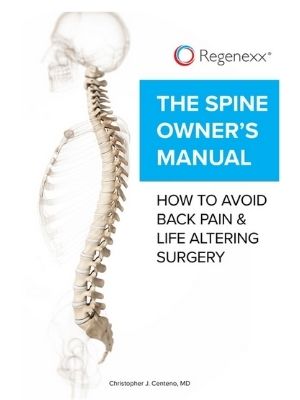Chronic Fatigue
Get Help With Chronic FatigueChronic Fatigue & Craniocervical Instability
Have you ever had a challenging all-day hike, athletic endeavor, or worked a double shift and felt exhausted the next day? Later that day or the next morning, moving across the room may have seemed almost impossible and took herculean power. Now image this occurs on a daily basis without any provocation. 24/7 simple tasks are nearly impossible due to a lack of strength and energy. This is chronic fatigue, and it is one of the common symptoms associated with craniocervical instability. Severity can vary and in severe cases, patients are confined to their beds. Aggravating and alleviating factors often times can not be identified.
Causes of Chronic Fatigue in CCI & AAI Patients
The exact origin of chronic fatigue in patients with craniocervical instability remains unclear. Possible explanations include:
- Misalignment of the upper cervical spine causing irritation or compromise of the brain stem.
- Elevated intracranial pressure.
- Decrease in blood flow to the brain
- Autonomic nervous system dysfunction
- Co-existing medical conditions such as myalgic encephalomyelitis/chronic fatigue syndrome (ME/CFS). This is a severe medical condition characterized by severe unmitigable fatigue not improved with rest. Other common symptoms include post-exertional malaise and pain.
Conditions Associated with Chronic Fatigue
Atlantoaxial Instability (AAI)
Instability simply means that bones move around too much, usually due to damaged ligaments. In the spine, this can cause nerves to get banged into and joints to get damaged. In the craniocervical junction, instability can cause the upper cervical spinal nerves to get irritated, leading to headaches. In addition, the C0-C1 and C1-C2 facet joints can also get damaged. In addition, there are other nerves that exit the skull here that can get irritated, like the vagus nerve, which can cause rapid heart rate. What’s the Difference Between CCI and AAI? CCI refers to instability in any part of the craniocervical junction…
Read More About Atlantoaxial Instability (AAI)Cervical Medullary Syndrome
Cervical Medullary Syndrome is a clinical condition that occurs as a result of inflammation, deformity, or compression of the lower part of the brain. Symptoms can be extensive with fluctuating severity based upon the extent of the underlying injury. For example, mild irritation of the brainstem may cause only mild, intermittent symptoms. The upper cervical spine and brain are complex with multiple structures. These structures reside within the skull and protective confines of the cervical spine. Neither expands to accommodate inflammation, injury, and disease. Rather the delicate tissues of the brain and spinal cord are irritated or compressed. The 4 major conditions that cause cervical medullary syndrome are…
Read More About Cervical Medullary SyndromeChiari Malformation
Chiari Malformation Is a medical condition where a part of the brain at the back of the skull abnormally descends through an opening in the skull. It is named after Dr. Hans Chiari who was an Austrian pathologist who in the late 1880’s studied deformities of the brain.The brain is a large structure divided into different parts that reside within the skull. Important parts of the brain called the Cerebellum and Brainstem sit at the base of the skull. The Foramen Magnum is a large hole at the base of the skull that allows the brain to join the spinal canal. The Cerebellum…
Read More About Chiari MalformationCraniocervical Instability
Craniocervical Instability is a medical condition characterized by injury and instability of the ligaments that hold your head onto the neck. Common symptoms of Cranial Cervical Instability include a painful, heavy head, headache, rapid heart rate, brain fog, neck pain, visual problems, dizziness, and chronic fatigue.CCI or neck ligament laxity treatment options depend upon the severity of the instability and clinical symptoms. When appropriate, conservative care should always be the first-line treatment. Craniocervical Instability Surgery is often recommended when conservative care fails. This involves a fusion of the head to the neck which is a major surgery that is associated with significant risks and complications…
Read More About Craniocervical InstabilityEDS in Children
Ehlers-Danlos Syndrome (EDS) refers to a group of disorders that affect the body’s connective tissue including skin, tendons, and ligaments. It is a hereditary disorder which means you are born with it. EDS has many different signs and symptoms which can vary significantly from patient to patient. It most commonly affects the skin, joints, and blood vessels. The estimated prevalence for all EDS varies between 1/10,000 and 1/25,000. The three most common types of EDS are: Hypermobile, Classic, and Vascular. We have used these skills and knowledge to treat the loose ligaments commonly found in EDS in children. Treatment options include bone marrow concentrate (BMC) and PRP.
Read More About EDS in ChildrenEhlers-Danlos Syndrome (EDS)
Disorders that affect and weaken the connective tissues such as tendons and ligaments. It is a hereditary disorder which means you are born with it. EDS has many different signs and symptoms which can vary significantly depending upon the type of EDS and its severity. It most commonly affects the skin, joints, and blood vessels. Joints are typically hypermobile with excessive joint range of motion because of a defect in collagen formation. In most cases Ehlers-Danlos syndrome is inherited. That is to say that you are born with it. The two main ways EDS is inherited are: autosomal dominant inheritance and autosomal recessive inheritance…
Read More About Ehlers-Danlos Syndrome (EDS)Thoracic Spine Arthritis
Osteoarthritis is a common type of arthritis. It is a degenerative joint disease that principally affects the cartilage in your joints. Cartilage is the slippery connective tissue that covers the ends of bones that form joints, and it allows for smooth, effortless movement. Osteoarthritis involves the breakdown of the cartilage with subsequent pain, swelling, and reduced range of motion. The thoracic spine is that section of the spine that is below the neck and above the low back. It is often referred to as the “mid-back.” Thoracic spine arthritis involves the breakdown of the cartilage in joints within the thoracic spine.
Read More About Thoracic Spine Arthritis